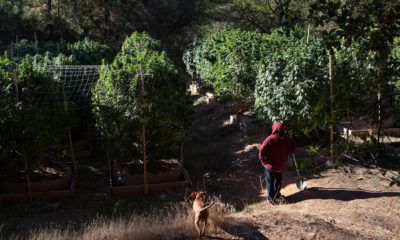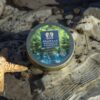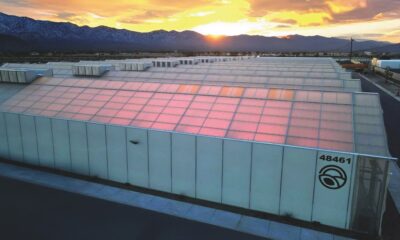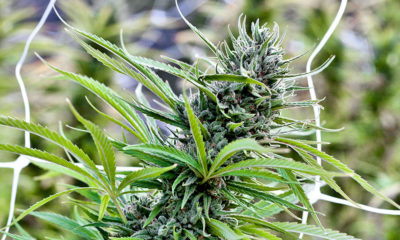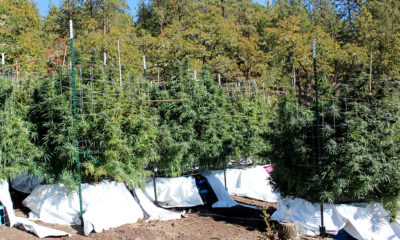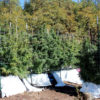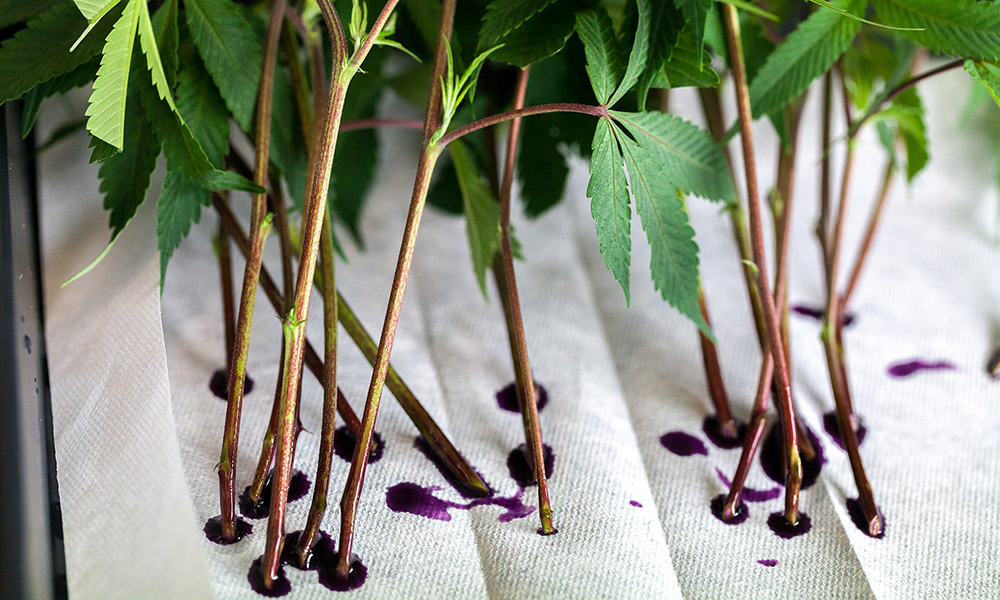
Cultivation
Glyphosate Case Highlights Pesticide Dilemma in Cannabis Industry
A verdict against glyphosate producer Monsanto has brought world attention to the dangers of pesticides and herbicides. This is a question with implications already felt in the cannabis industry — both legal and illegal.
A ground-breaking legal case on a popular herbicide producer’s responsibility for cancers ended on Aug. 10 when a San Francisco jury awarded $289 million in damages to a school grounds-keeper suffering from lymphoma.
As SFGate reported, the jury unanimously found that Monsanto was responsible for Dewayne “Lee” Johnson’s non-Hodgkin’s lymphoma and should have known of the threat posed by his on-the-job exposure to glyphosate, an herbicide marketed by the company under the brand names Roundup and Ranger Pro. Jurors found that Monsanto had “acted with malice or oppression” when it sold glyphosate to Johnson’s employer, the Benicia Unified School District, without informing of its potential health risks.
Pesticide Concerns in the Legal Cannabis Industry
To what extent is chemical exposure to pesticides and herbicides a concern for the cannabis industry — either for workers or consumers?
Lydia Abernethy, director of cultivation science for the Berkeley, California-based cannabis testing facility Steep Hill Labs, told Cannabis Now that because glyphosate is not one of the 66 residual pesticide chemistries required for safety testing by the Bureau of Cannabis Control, so the laboratory does not test for glyphosate in cannabis products or harvest batches. So, Abernethy says, Steep Hill is “unable to verify the presence of this chemical at this time” in California.
But she adds: “I would expect that cultivators use glyphosate products to control weeds on cultivation sites, either within the garden or around the outside of buildings. Proposition 65 and negative press may be reducing the frequency these products are applied at cannabis grows, but I cannot confirm this.”
Proposition 65 — the Safe Drinking Water and Toxic Enforcement Act — is a right-to-know law concerning pesticides that approved by California voters in 1986. It requires the state to maintain a list of chemicals known to cause cancer or birth defects and requires businesses to provide warnings prior to causing a significant exposure to a listed chemical. It also prohibits discharges of these substances into sources of drinking water.
Glyphosate was added to the Proposition 65 list by the state Office of Environmental Health Hazard Assessment (OEHHA) in March 2017 — although it failed to immediately take effect due to a legal challenge launched by Monsanto. The change became official in July 2017, when a Fresno judge ruled for the state in Monsanto v OEHHA. Although the case is on appeal, no stay of the listing has been granted. The listing took effect one year later — July 7, 2018.
“Awareness of the human health risks from exposure to this chemical increases constantly,” Abernethy said. “Fear of product recalls and negative brand recognition should limit the liberal application of these products near cannabis crops, theoretically.”
She pointed to folks like Michael Murphy of the Clean Cannabis Initiative, a notorious litigant who is bringing hundreds of lawsuits against cannabis companies with detectable limits of pesticides in their products.
“However, until the BCC or another regulatory body (or third party secret shopper) does the residual pesticide testing to confirm the presence of this compound in cannabis products, it will be difficult to pin down the concentration and frequency of glyphosate contamination in this industry,” she said.
The “Proposition 65 plaintiff” Michael Murphy and his Clean Cannabis Initiative are certainly pressing the Bureau of Cannabis Control on the matter. Last year, Murphy issued almost 700 Prop 65 “Notices of Violation” to cannabis dispensaries throughout California, alleging that their products contain such listed pesticides as myclobutanil, carbaryl and malathion.
And there has also been at least one recall related to this question. Marijuana Business Daily reported in July that a vape cartridge manufacturer issued the first cannabis product recall in California’s new regulated market. The Bloom Brand company and its manufacturer Greenfield Organix 4th St. voluntarily recalled four products, affecting nearly 100 retailers across California.
Ecologically conscious cannabis cultivators and consumers in Northern California six years ago launched the Grow It in the Sun initiative, to reverse the trend toward hydroponic and advocate for organic outdoor cultivation. Of course, the legal industry has boomed since then, increasing the pressure on growers to use the most cost-effective methods. And, as a Bloomberg report noted last year, the problem is exacerbated by the failure of the federal Environmental Protection Agency to regulate even state-legal cannabis cultivation.
An Urgent Issue in the Illegal Industry
If this question is an increasingly pressing one in the legal cannabis industry, it might be reaching crisis proportions in the illegal sector.
During the Operation Forest Watch eradication campaign in the foothills of the Sierra Nevada this summer, cultivation sites were found with a pink material originally thought to be fire retardant — but actually proved to be the toxic pesticide carbofuran.
“[Growers will] put it around the base and they basically use it to… kill anything that tries to intercede with [the] growth of their plant, and it’s very harmful, very dangerous,” said Madera County Sheriff Jay Varney in comments to a local television channel KFSN.
Federal authorities report that 89 percent of illegal cannabis grows raided in California this year contained traces of potentially lethal pesticides, poisoning wildlife and posing a threat to water supplies. According to an Associated Press article published on Aug. 28, that’s a big jump from 2017, when such chemicals were found at about 75 percent of outlaw grow sites discovered on California’s public lands. And this year’s figure is six times higher than in 2012, with a particular emphasis on the appearance of carbofuran.
Mourad Gabriel of the Integral Ecology Research Center in Humboldt County said this pesticide is so powerful that a quarter-teaspoon can kill a 300-pound bear.
Concern about the ecological impacts of cannabis cultivation have been mounting in recent years, and it was hoped that the day-lighting of the cannabis industry could meaningfully address the problem. This is another way in which the continued existence of an illegal sector poses a challenge to visions of a responsible industry.
Retrogression in Colombia
It’s a grim irony that all this is happening just as Colombia is about to resume aerial spraying of glyphosate on the countryside of the Andean nation to wipe out illegal coca crops. As a June report in El Colombiano newspaper explained, this time the spraying will be carried out by drones rather than planes, to supposedly target the planted areas with greater precision. The report also notes that the move was undertaken under heavy pressure from the White House in response to booming coca cultivation in the country.
Colombia suspended use of spraying glyphosate against illegal crops in 2015, after the World Health Organization’s International Agency for Research on Cancer (IARC) concluded that the herbicide “probably” causes cancer.
And while today the glyphosate spraying is overwhelmingly aimed at coca crops, it actually began in Colombia in the ’70s to wipe out cannabis. Colombia’s El Espectador ran a retrospective on the spray campaign when it came to a halt in 2015, noting that glyphosate was first used against cannabis plantations in the northern Sierra Nevada de Santa Marta in 1978.
The anti-cannabis spraying continued at least through 1993, as coverage in Bogotá daily El Tiempo indicated. It was in this period that Colombia’s old cannabis syndicates were morphing into the ultra-violent cocaine cartels — itself a bitter fruit of prohibition.
TELL US, do you know if the cannabis you smoke is free of pesticides?



